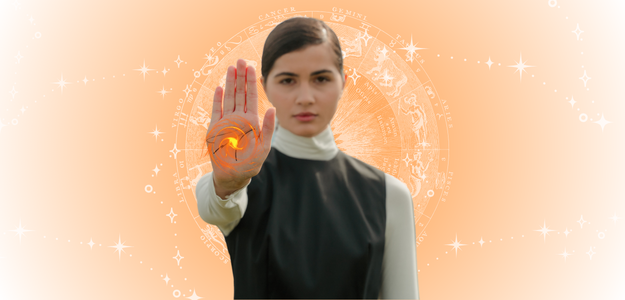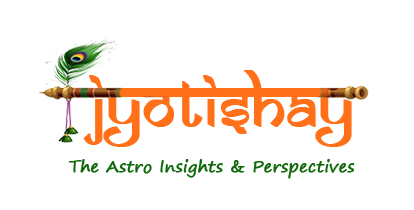Blogs

An Easy Way to Know Your Profession By Palmistry
Palmistry, also known as chiromancy or palm reading, is an ancient practice dating back thousands of years. It is the art of interpreting the lines, shapes, and patterns on a person's hands to reveal their character traits, personality,crets of your future by simply looking at your own hands! Sounds too good to be true, right? Whether you're stuck in a dead-end job or just curious about what lies ahead for you career-wise, palmistry is here to provide guidance like never before. So grab a magnifying glass (or just use your keen eyes) and join us as we delve into the world of palmistry and discover how it can help you uncover your true profession!
The basics of understanding palm lines and shapes
When it comes to palmistry, understanding the basics of palm lines and shapes is crucial. The lines on our palms can reveal a wealth of information about our personality traits, strengths, and weaknesses. By analyzing these lines and shapes, we can gain insight into potential career paths that align with our inherent talents.
One of the primary lines in palmistry is the life line. This line gives an indication of vitality and overall well-being. A strong and clear life line often suggests a person who possesses resilience, energy, and a passion for their profession. On the other hand (pun intended), a weak or fragmented life line might indicate low energy levels or difficulties in finding fulfillment in traditional careers.
Another important line to consider is the head line. This line represents your intellect and how you process information. A long head line suggests analytical thinking skills needed for professions such as science or research. A short head line may indicate creativity and an inclination towards artistic pursuits like writing or painting.
The heart line reflects emotions, relationships, and compassion. A deep heart line signifies empathy which could lead to professions such as counseling or social work. Conversely, if your heartline appears shallow or straighter this might suggest logical reasoning skills suited for fields like law or finance.
The shape of your hands also provides valuable insights into your professional inclinations. For example, people with square hands tend to excel in practical occupations that require attention to detail while those with long fingers are often drawn towards more expressive careers such as acting or music.
By examining both the lines on your palms as well as their shape, you can begin to uncover clues about which profession may be best suited for you based on your natural abilities and inclinations.
How different professions are reflected in the hands
Different professions require different skills and qualities, and interestingly enough, these traits can often be reflected in the lines and shapes of our hands. Palmistry, an ancient practice that reads the palms to gain insight into a person's character and future, offers fascinating clues about one's professional potential.
For example, individuals with long fingers are often seen as detail-oriented and analytical, making them well-suited for careers in fields such as accounting or research. On the other hand (pun intended), those with short fingers tend to be more practical and action-oriented, excelling in roles that require physical labor or problem-solving on-the-go.
The shape of the palm can also shed light on career inclinations. People with square palms are known for their practicality and organizational skills – ideal attributes for managerial positions or entrepreneurship. Conversely, those with oval-shaped palms often possess artistic talents and a strong sense of creativity which could lead them towards careers in design or performing arts.
Furthermore, specific markings on the palm can provide further insights into potential career paths. For instance, a prominent Apollo line indicates artistic abilities while a well-defined Mercury line suggests proficiency in communication-related fields like writing or public speaking.
While it is important to note that palmistry should not be solely relied upon for major life decisions such as choosing a profession, it can serve as an additional tool for self-discovery and guidance. By interpreting our own hands through this ancient art form combined with trusting our instincts and passions – we may find clarity when navigating through our professional journeys.
In conclusion,
Palmistry offers intriguing possibilities when it comes to understanding ourselves better - including glimpses into our professional potentials. While these insights should never replace personal introspection or sound career advice from professionals within respective industries - they do provide an interesting perspective worth exploring! So why not take some time to examine your own hands? You might just uncover hidden talents or discover new avenues you had never considered before!
Examples of palm readings for various careers
When it comes to palmistry, the lines on your hand can reveal fascinating insights about your career path and potential. By analyzing the various lines and shapes on your palm, a skilled palm reader can provide valuable guidance on which professions may be well-suited for you.
For example, if you have a strong and prominent fate line running vertically up the center of your hand, it suggests that you are destined for success in a leadership role. This could indicate careers such as management, entrepreneurship, or politics where you have the ability to take charge and make decisions.
On the other hand (no pun intended), if your heart line is long and well-defined with gentle curves at its ends, it signifies that you possess great empathy and compassion. This makes fields like counseling, social work, or healthcare ideal choices for those with this type of palm reading.
If your head line is deeply etched into your palm with multiple branches spreading outwards, it indicates strong analytical skills and intellectual prowess. This would suggest careers in research, science, or academia where logical thinking is paramount.
Furthermore, individuals with a creative streak often exhibit curved fingers along with an artistic-looking thumb. These characteristics signify talent in artistic pursuits such as painting , writing , music etc . Such people are likely to thrive in fields like graphic design , advertising , writing etc .
It's important to remember that these examples are just general indications based on traditional interpretations of palmistry. They should not be taken as definitive predictions about one's career trajectory. Palmistry serves as a tool for self-discovery rather than an absolute authority on professional choices.
So next time you look at your hands wondering what lies ahead professionally,focus more towards analysing yourself from within rather than completely relying over online astrology insights or jyotishya prediction.
Just keep an open mind while exploring different possibilities,and let palmistry serve as another useful resource along this journey of self-discovery!
Tips for interpreting your own palm for career guidance
Tips for Interpreting Your Own Palm for Career Guidance
When it comes to palmistry, the lines and shapes on your hand can offer valuable insights into your career path. Here are some tips to help you interpret your own palm for career guidance.
Pay attention to the major lines on your hand - the life line, head line, and heart line. These three lines can provide clues about different aspects of your professional life. For example, a strong and clear life line may indicate vitality and success in your chosen profession.
Next, observe any special marks or signs on your palm. These could include crosses, stars, or triangles. Each mark has its own significance and can reveal specific talents or challenges related to certain professions.
Additionally, consider the shape of your hand. Broad hands with square palms often belong to practical individuals who excel in fields such as engineering or finance. On the other hand (no pun intended), long and slender fingers may suggest artistic abilities suited for careers in music or writing.
Remember that palmistry is just one tool among many when it comes to self-discovery and career guidance. It should be used alongside other methods like self-reflection and professional counseling.
Keep an open mind when interpreting your own palm readings. While they can provide valuable insights into potential career paths, it's important not to rely solely on them for decision-making purposes.
By combining palmistry with introspection and advice from trusted mentors or professionals in various industries, you'll be able to gain a more holistic understanding of yourself and make informed choices regarding your career journey.
Common misconceptions about palmistry and career predictions
Common Misconceptions About Palmistry and Career Predictions
Palmistry, like any other form of divination, is often subject to misconceptions and skepticism. When it comes to career predictions through palm reading, there are several common misconceptions that need debunking.
Palmistry does not provide a definitive roadmap for your entire career path. It cannot predict with absolute certainty what profession you should pursue or how successful you will be in a particular field. Instead, it offers insights into your personality traits and potential abilities that may align with certain careers.
Another misconception is that palm lines alone can determine your profession. While the shape and length of certain lines on the hand can give indications about your aptitude for specific skills or talents, they do not dictate your chosen career path.
Additionally, it's important to understand that palmistry is not a fixed science but rather an interpretation based on cultural beliefs and traditions. Different cultures may have their own unique interpretations of palm readings for professions.
Furthermore, relying solely on palmistry for career guidance without considering other factors such as personal interests, education, skills development, and opportunities can be misleading.
Online astrology insights or jyotishay app predictions should not be taken as absolute truths. These tools can offer general guidance but should never replace personal judgment or professional advice when making important life decisions regarding one's career.
In conclusion (not concluding): It's essential to approach palmistry as a tool for self-discovery rather than an infallible means of determining one's profession. Use it alongside other methods of self-assessment and trust your own instincts when choosing a path that aligns with your passions and goals
Conclusion: Trusting your own instincts and using palmistry as a tool for self-discovery
Trust is a powerful thing. When it comes to finding our path in life, we often seek guidance from various sources - friends, family, mentors, and even astrology. Palmistry, with its deep roots in ancient wisdom and symbolism, offers us another tool for self-discovery.
Remember that palmistry should not be seen as an absolute predictor of your career or profession. Instead, think of it as a way to gain insight into your strengths and weaknesses, your natural talents and inclinations. It can help you understand yourself better and make more informed choices along your journey.
Trusting your own instincts is crucial when it comes to interpreting the lines on your palm. While there are general interpretations for certain lines and shapes associated with different professions, remember that everyone's hands are unique. Your hand may have combinations of features that don't fit neatly into any predefined category.
So how can you use palmistry as a tool for self-discovery? Start by studying the basics – learn about the major lines on your hand such as the heart line (representing emotions), head line (representing intellect), fate line (representing destiny) etc., Pay attention to their length, depth, and shape.
Next, observe any distinctive markings or symbols on your palms such as stars or crosses. These could provide additional insights into potential career paths or challenges you may face along the way.
Take notes while examining your own palm – jot down any observations or patterns you notice. Look for correlations between what you see in terms of lines and shapes on your hand and what resonates with you personally regarding different professions.
It's important to keep in mind that palmistry is just one piece of the puzzle when it comes to understanding our purpose in life. Don't rely solely on this ancient practice but combine it with other tools like introspection exercises or seeking advice from professionals who specialize in career counseling.




 By -
Jyoti Jindal
By -
Jyoti Jindal 0
comments
0
comments Tag
Tag (1).jpeg)
 2024-09-29 16:35:16
2024-09-29 16:35:16 (1).jpg)













